On 19 December 1914, the Herald newspaper reported that an exciting new invention was coming to Victoria. The bowser petrol pump system would enable motorists to fill their tanks with petrol in a few short minutes, ‘with a mere turning of the hose’ (p. 4).
Old-style petrol bowsers outside a garage in Ripponlea. This work is in copyright; H2011.52/285
This was a welcome development for Victorians, who were used to buying petrol from their local grocer or hardware store in four gallon tins.
[Interior and exterior, Benjamin Bolton, Family Grocer, Port Melbourne]. Photograph by Algernon Darge; H94.182/8
The new bowser system was quick and easy to use, ‘without waste, trouble or discomfort’. It was also ‘very much in vogue in the United States of America, and on the Continent of Europe’, which was in itself, enough to recommend it.
In the ensuing years, kerbside petrol bowsers became an increasingly common sight, despite initial safety concerns, especially ‘where boys with matches were concerned’ (Prahran Chronicle, 11 November 1916, p. 5).
 An old petrol bowser outside a grocery store on the main road in Kingston, 1963; H97.250/1802
An old petrol bowser outside a grocery store on the main road in Kingston, 1963; H97.250/1802
By the late 1920s, service stations began to appear in Melbourne’s well-to-do suburbs, but it wasn’t until the thirties that the ‘servo’ really took off.
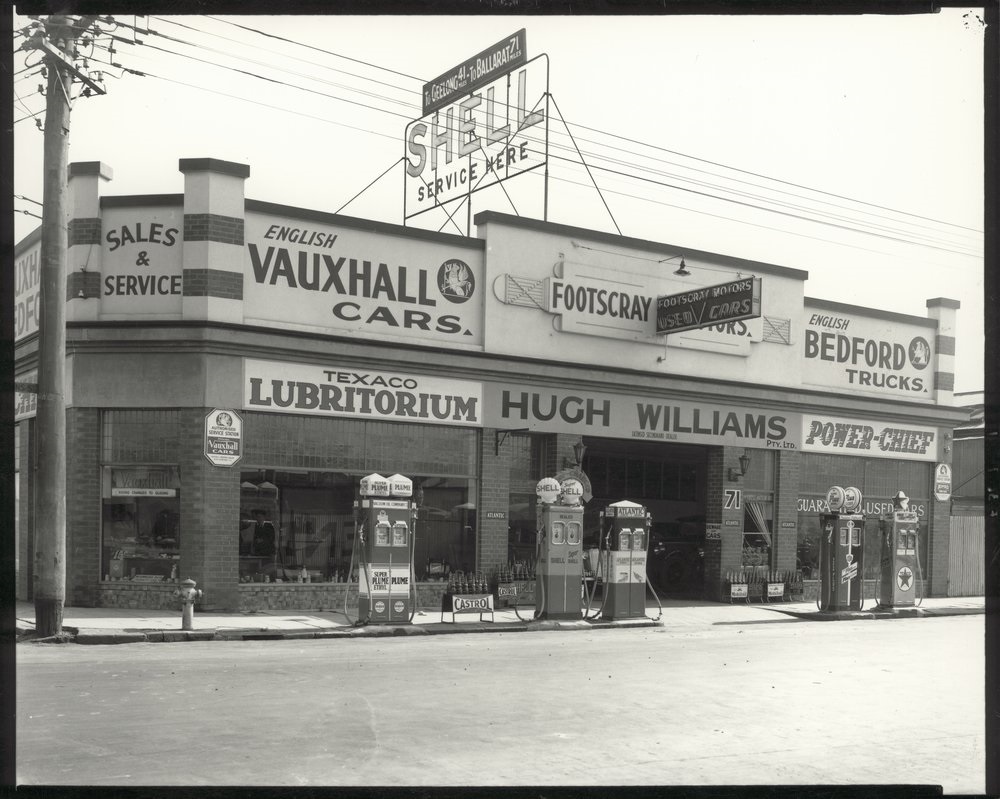 Kerb side pumps outside a servo in Footscray. Harold Paynting collection; H2009.185/4
Kerb side pumps outside a servo in Footscray. Harold Paynting collection; H2009.185/4
The classic servo was attached to a garage. Most sold multiple petrol brands, like this one in Collingwood from the 1940s, where you could choose Atlantic, Golden Fleece, Alba, or Shell:
 Robell Motors Motorservice Garage, Collingwood, with petrol pumps in foreground. Harold Paynting Collection; H94.150/51
Robell Motors Motorservice Garage, Collingwood, with petrol pumps in foreground. Harold Paynting Collection; H94.150/51
The ‘servo’ was a motorist’s one-stop shop, where a friendly attendant would not only fill your car with petrol, but could also pump your tyres, wash your windscreen, shoot the breeze and book you in for a grease and oil. No wonder Victorians loved them.
Every servo had its own distinctive appearance and character. This servo displays elements of the Streamline Moderne, with its sleek curves and rounded windows:
Exterior view of service station. Harold Paynting collection; H2011.52/211
This servo in Seymour was fashioned out of an old Methodist church. You can still see its remnants in the arched windows and gabled roof:
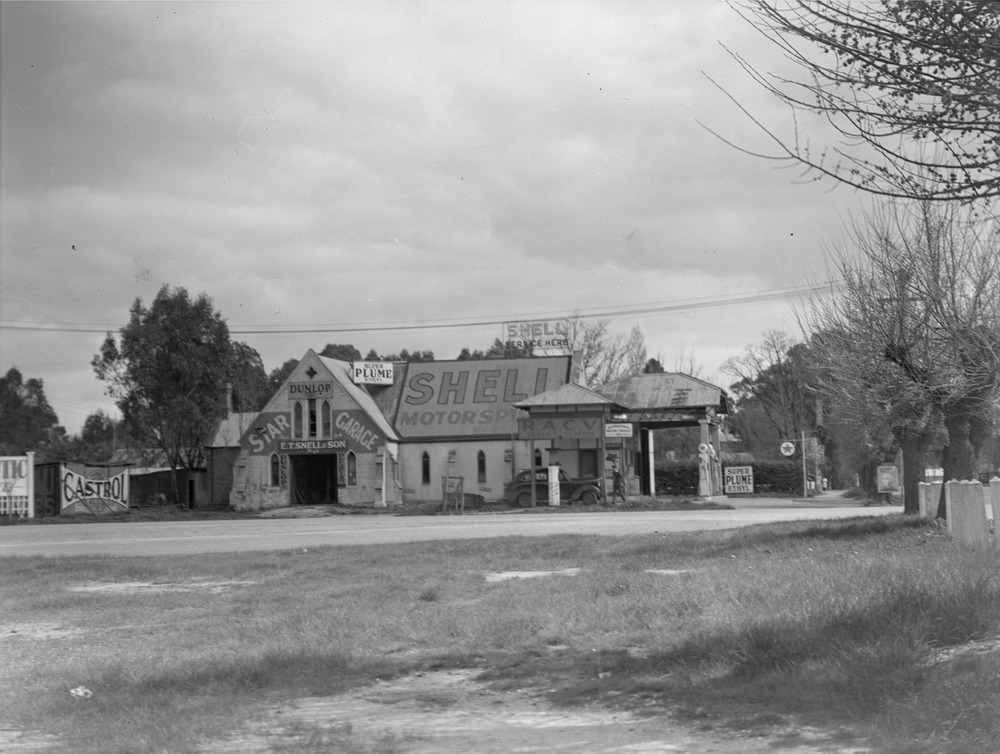 Ruth Hollick collection. Donated by the National Gallery of Australia. This work is in copyright; H2004.61/698
Ruth Hollick collection. Donated by the National Gallery of Australia. This work is in copyright; H2004.61/698
Attendants at this Total servo look more like police officers, with their trademark badges and their dark, peaked caps:
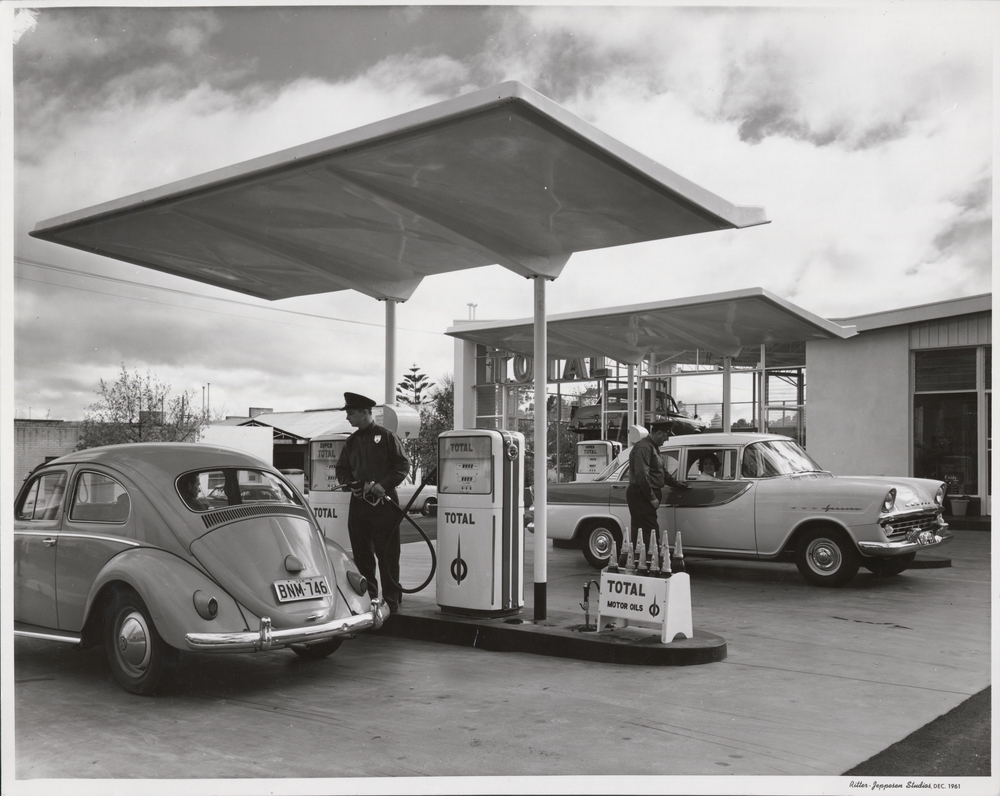 Service station, Melbourne. This work is in copyright; H88.33/103
Service station, Melbourne. This work is in copyright; H88.33/103
By the early 1950s, things began to change, as petrol companies embraced the concept of solo marketing.
 Neptune service station. Photograph by Helmut Newton; H2006.47/656
Neptune service station. Photograph by Helmut Newton; H2006.47/656
The servos of old, with their personalised service and choice of petrol brands, began to disappear. Sleek, shiny megastores, styled in the image of their big brand owners, arrived in their place.
 Attendants at Shell service station. Le Dawn Studios archive; H2005.100/2396
Attendants at Shell service station. Le Dawn Studios archive; H2005.100/2396
Petrol companies rushed to secure themselves a piece of the local market. Servos spread like a cancer, often at the expense of local shops and housing.
Throughout the fifties and into the early sixties, anxious residents watched on as the ‘petrol wars’ played out around Melbourne. From Preston [1] to Richmond [2], Collingwood [3] to Caulfield [4], few suburbs were left untouched, with even Toorak residents feeling the pinch [5].
In 1954, a total of 38 servos were counted within a one-mile radius of Camberwell Junction [6].
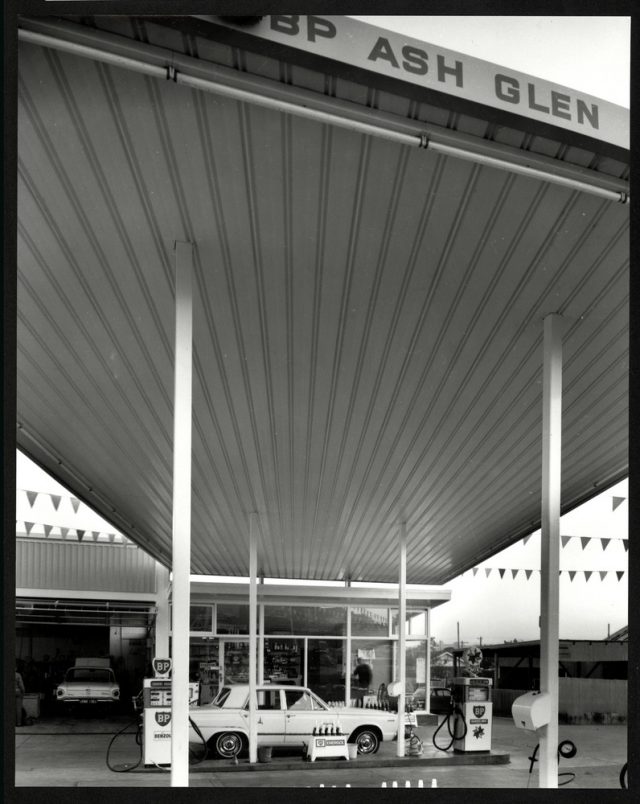 John Lysaght’s Colorbond “Spandier” at Bentleigh. Photograph by Wolfgang Sievers. This work is in copyright; H2003.100/881
John Lysaght’s Colorbond “Spandier” at Bentleigh. Photograph by Wolfgang Sievers. This work is in copyright; H2003.100/881
By the mid 1960s, the ‘petrol wars’ reached their peak before a global crude oil surplus caused company profits to plummet. [7] The number of service stations fell and eventually stabilised.
The concept of self-service arrived in 1976, and with it, the last vestige of the old-world servo was gone.
References
[1] 20 February 1957, ‘Preston asked to allow 13 more petrol stations’, Herald, p. 2
[2] 28 December 1956, ‘Houses went in the night’, Herald, p. 3
[3] 4 May 1959, ‘Houses go at Collingwood’, Herald, p. 3
[4] 1 March 1960, ‘4 Caulfield houses to go for service stations’, Herald, p. 3
[5] 4 March 1963, ‘Wallace Avenue – Toorak Rd – New protest on petrol station plan’, Herald, p. 4
[6] ‘Service stations’, Encyclopedia of Melbourne
[7] Ibid
More to explore
- Read Jim Sonter’s Servo: great Australian service stations, 2011, HarperCollins Publishers, Sydney
- Learn how to find photographs in the Library’s collections

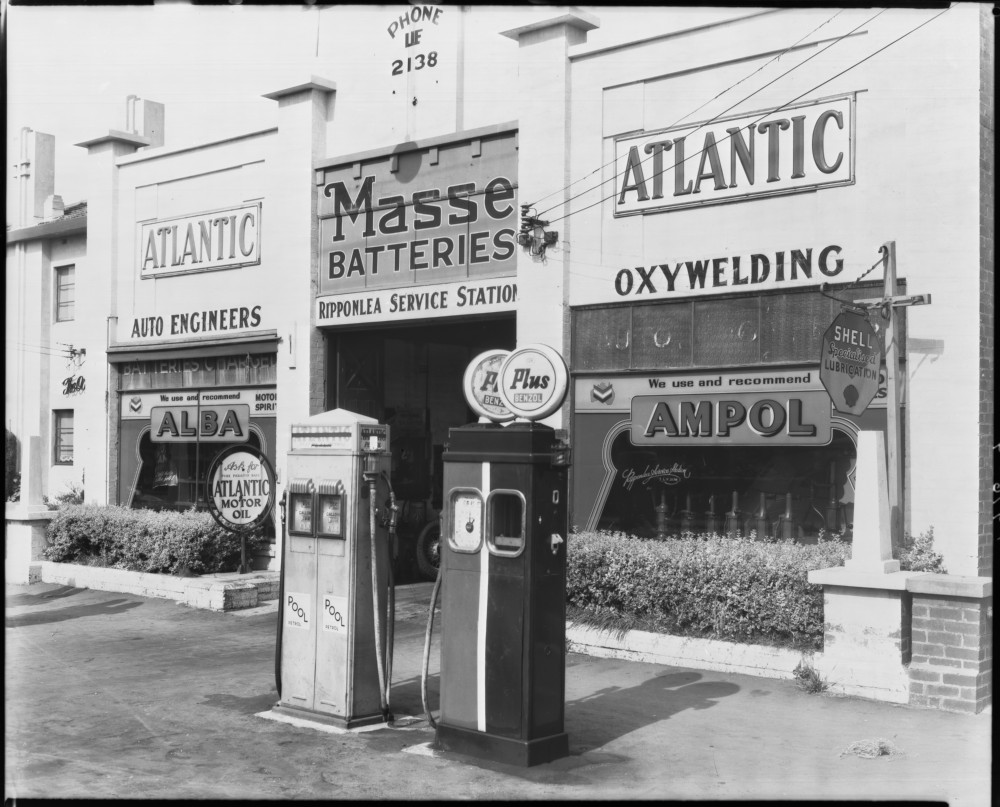

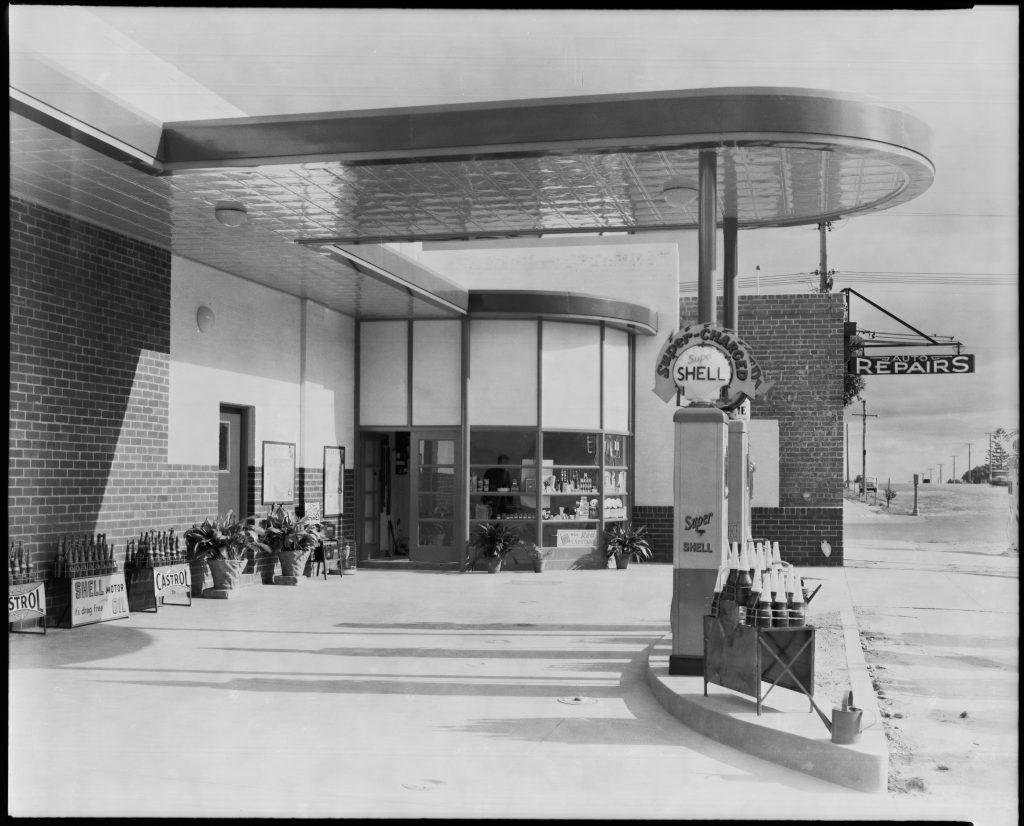

Great images and info. Fascinating to to be reminded on just how much variety there was in the style of servo buildings.
Thanks Tim.
A brilliant trip down memory lane, (well the latter years anyway 🙂 ) thanks for great photos, love the one of the grocer’s store.
Great images to remind us of the good old days.
Another period in our history, long gone but not forgotten after your article Sarah.
Windscreen water battery oil and your tyres. Singing commercial from early 60s when people gave good service.